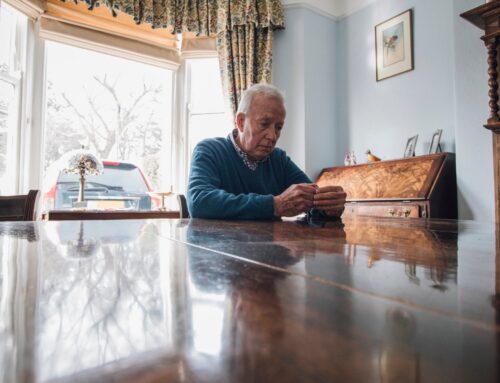(This is an excerpt from a story by Paula Span written for The New York Times. To read more, visit: http://nyti.ms/2r2aa4w.)
“All the carpets are coming up, so they won’t be a trip hazard,” said Ernie MacNeill, walking through the split-level house in Fair Lawn, N.J., that he is remodeling for a client who struggles to walk.
MacNeill also plans to widen a bathroom door to provide better access for a wheelchair or walker.
“We’ll knock this closet back,” he added.
The home’s owner, Elliot Goldberg, 71, currently has to transfer from one stair lift to another to reach his third-level bedroom and bath. Moving the second-floor closet will make space for a new lift that can turn the corner and proceed upstairs, a far safer configuration.
Goldberg, a Vietnam veteran with multiple health problems, has lived on this quiet suburban street for 30 years. His wife died four years ago, but he shares the house with their daughter and grandson.
He could move to a single-floor apartment or an assisted living facility, but like most older people, he wants to stay put. “I have a lot of good memories here,” he said.
So he turned to MacNeill, a longtime contractor in nearby Pine Brook. In 2014, MacNeill took a three-day course through the National Association of Home Builders to become a Certified Aging in Place Specialist, or CAPS.
Older people have the highest rate of homeownership in the country — about 80 percent, according to a 2016 report by the Joint Center for Housing Studies at Harvard. The great majority live in single-family homes, most of them poorly suited for the disabilities common in later life.
The center has looked at three of the most important accessibility features that allow people to move safely around their living spaces: entrances without steps, single-floor living, and wide hallways and doorways that can accommodate wheelchairs.
“Less than four percent of the U.S. housing stock has all three of those,” said Jennifer Molinsky, a senior research associate at the center.
Add two more important elements for aging in place — doors with lever handles, and light switches and electrical outlets that can be reached from a wheelchair — and the proportion drops to one percent.
You’ll often hear older people vow that they won’t leave their homes except “feet first.” Without modifications, however, the design of most older Americans’ homes could eventually thwart their owners’ desire to stay in them.
Solving that problem, individually or collectively, means confronting certain obstacles.
About 3,500 CAPS graduates across the country — builders and remodelers, occupational therapists, interior designers — retrofit homes to help people remain in them safely, said Dan Bawden, a Houston contractor who helped develop the program in 2001.
I asked how many it would take to serve all the older and disabled Americans who want to age in place. “Ten times the number we have now,” he said. Moreover, participants in the program remain unevenly distributed, clustered in cities.
Many of the nation’s more than 200,000 occupational therapists also assess homes and recommend safety modifications, said Scott Trudeau, who manages productive aging programs for the American Occupational Therapy Association.
The process works best, he said, when CAPS-trained remodelers and occupational therapists team up, as a growing number have. Bawden’s Legal Eagle Contractors (he’s also a lawyer) works with a therapist, Kate Akers, for example.





